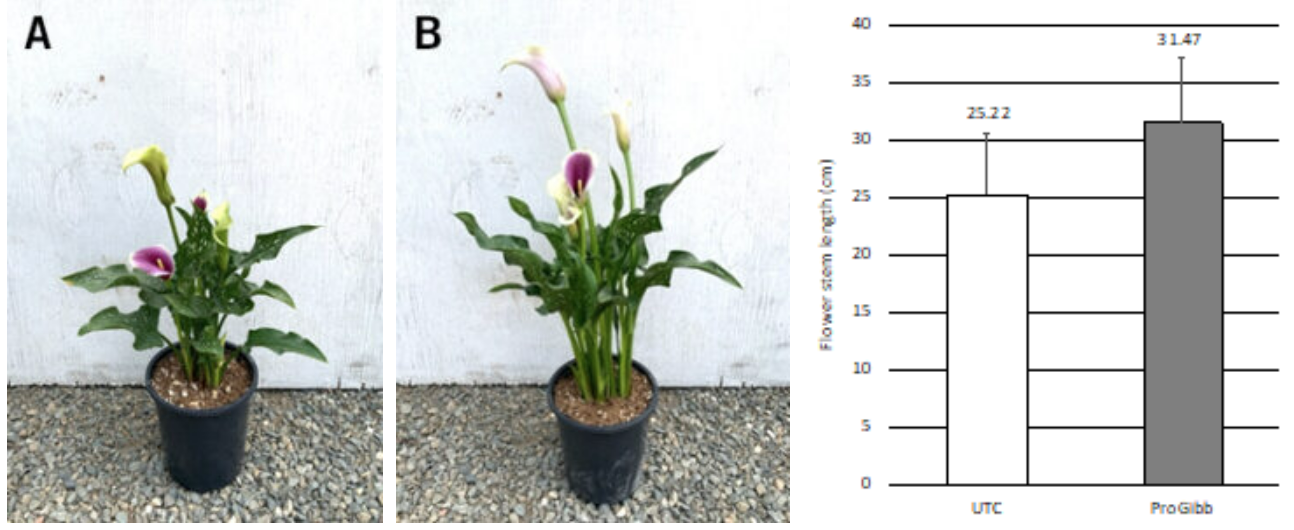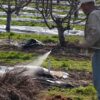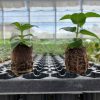Increase Cut Flower Stem Length with ProGibb LV Plus T&O
Successful cut flower production depends on the grower’s ability to produce crops economically in a short, predictable amount of time (Bergman et al., 2016). The profitability of a cut flower cultivar relies on market price, a yield of long, strong, and easy-to-harvest stems, manageable insect and disease pressures, short crop cycle, and long postharvest life (Armitage and Laushman, 2003; Bridgen, 1992). Few cultivars have all these characteristics. Common problems include unacceptably short stems, long production times, or lengthy flower-initiation procedures. Gibberellic acid (GA3) has been used effectively in cut flower crops to address some of these challenges, particularly increasing stem length. Table 1 lists published scientific studies where GA3 was successfully used to increase flower stem length of ornamental plant species. It has been reported from numerous research trials that GA3 can effectively increase vegetative growth, phylloclade development, and flower bud formation (Table 1). As the literature references below show, these uses of GA3 have been known for decades, and growers have used products containing GA3 as the active ingredient for stem elongation in ornamental cut flowers for decades.
Table 1. Published scientific literature on the use of GA3 to increase the length of stem/flower stalks in various ornamental plants.
| Reference | GA3 Rates Tested | Effects Observed |
| Al-Khassawneh et al., 2006 | 0-500 ppm | GA3 applications significantly increased flower stalk and plant height in black iris plants. |
| Annis et al., 1992 | 0-500 ppm | GA3 applications significantly increased vegetative growth, measured as foliage height, in Craspedia globosa plants. |
| Bergmann et al., 2016 | 0-1,600 ppm | Of the 13 cultivars tested, ‘Bouquet Purple’ sweet william, ‘Imperial Giants Pink Perfection’ larkspur, ‘Summer Pastels’ yarrow, and ‘Toreador Red’ celosia plants exhibited the strongest flower stem length growth after application of GA3 treatments. |
| Bergmann et al., 2017 | 0-50 ppm | Foliar spray application of GA3 significantly increase flower stem length of ‘Renaissance Red’ poinsettia plants. |
| Bose et al., 1980 | 0-1,000 ppm | Length of flower stalk of Hyppeastrum hybridum ‘Fire Dance’ plants were significantly increased by GA3 applications. |
| Kumar et al., 2012 | 0-150 ppm | Flower stem length, measured as plant height, was significantly increased by GA3 applications in carnation. |
| Louw et al., 2018 | 0-500 ppm | A significant increase in shoot length was observed in Leucospermum protea cultivars ‘Succession II’ and ‘Soleil’ after application of GA3. |
| Marth et al., 1956 | 0-100 ppm | Vegetative growth and stem elongation were studies in 49 plant species after application of GA3 in various ways. Stem length increase was a general response in the species studied with up to 400% growth over control plants. |
| Michniewitz and Lang, 1962 | 0-100 ppm | Significant stem elongation was observed after GA3 application in five plant species (Centaurium minus, Myosotis alpestris, Crepis parviflora, Silene armeria, Bryophyllum crenatum). |
| Ohno and Kako, 1991 | 0-40 ppm | The length of the flower stalk of a Cymbidium hybrid orchid was significantly increased by GA3 application. |
| Othman et al., 2021 | 0-200 ppm | Foliar application of GA3 resulted in a significant increase in stem length/plant height in gerbera and Asiatic lily plants. |
| Pogroweska and Sadkowska, 2006 | 0-400 ppm | Flower stem length was significantly increased by GA3 applications. A rate response was observed, the higher the concentration of GA3 the greater the effect. |
| Pudelska and Podgajna, 2013 | 0-100 ppm | Length of inflorescence stalk of four Dahlia cultivars was significantly increased by GA3 applications. |
| Rudnicki et al., 1976 | 0-2.0% | Flower stalk length was increased by GA3 applications in tulip cultivars. |
| Sharifuzzaman et al., 2011 | 0-150 ppm | Significant increase in flower stalk length was reported for chrysanthemum plants after GA3 application. |
| Tiwari et al., 2018 | 0-100 ppm | Marigold cultivar ‘Pusa Narangi Gainda’ showed a significant stem elongation after application of GA3, regardless of the rate of nitrogen fertilizer applied. |
| Verma, 2003 | 0-100 ppm | The increase of flower stalk length of two carnation cultivars (‘White Candy’ and ‘Red Corso’) was noticed by GA3 applications. |
| Zulfiqar et al., 2019 | 0-150 ppm | GA3 applications significantly increased flower shoot diameter and length in Gazania rigens plants. |
Here, we present experimental data below from our internal research trials with ProGibb LV Plus T&O to increase flower stem elongation in foxglove (Fig. 1), calla lily (Fig. 2), gerbera daisy (Figs. 3-4), penstemon (Fig. 5), phlox (Fig. 6), and column stock (Fig. 7) plants. We chose to test foliar applications at a 100 ppm GA3 rate because most cut flowers respond well to this rate. The general response in all crops tested was the elongation of the flower stem due to the increased growth rate of internodes after the application of ProGibb. With the increased stem length, we did not see reduced stem diameter which would negatively affect cut flower value since long, thin stems are susceptible to breaking. In the case of the gerbera daisy, we noted a slight increase in flower size along with the elongation of stem length. Overall, we saw an excellent plant response with this product with no phytotoxicity.
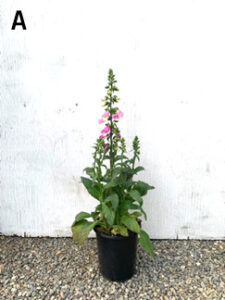
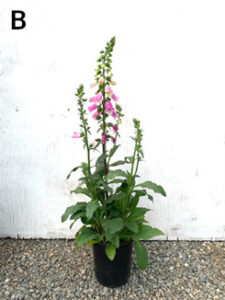
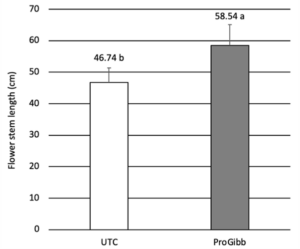
Fig. 1. Efficacy of ProGibb LV Plus T&O to increase flower stem length in foxglove ‘Dalmatian Purple’. Treatments: Untreated control (A) and 100 ppm GA3 (B).
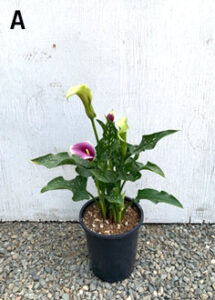
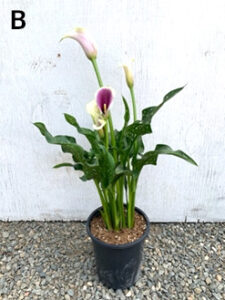
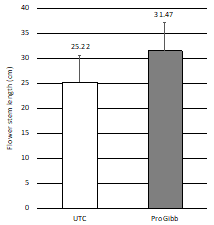
Fig. 2. Efficacy of ProGibb LV Plus T&O to increase flower stem length in calla lily ‘Picasso’. Treatments: Untreated control (A) and 100 ppm GA3 (B).
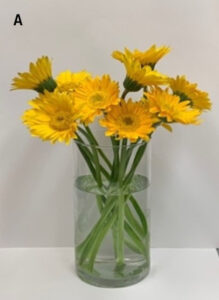
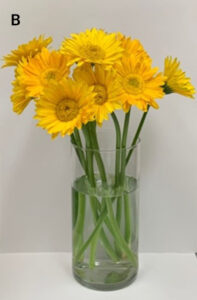
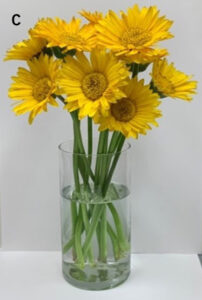
Fig. 3. Appearance of gerbera daisy ‘Garvinea’ flower stems 4 weeks after application of ProGibb LV Plus T&O. Treatments: Untreated control (A), 50 ppm GA3 (B), and 100 ppm GA3 (C).
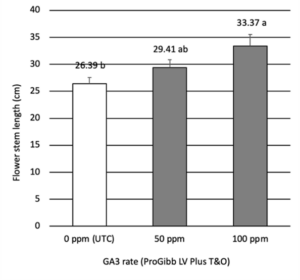
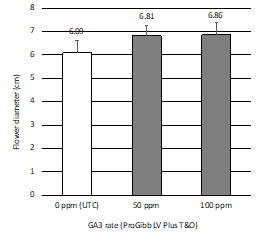
Fig. 4. Efficacy of ProGibb LV Plus T&O at 50 ppm and 100 ppm GA3 rates for increasing flower stem length and flower size of gerbera daisy ‘Garvinea’ plants 4 weeks after product application.
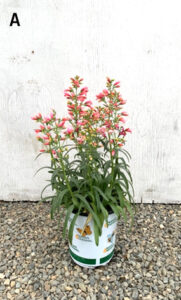
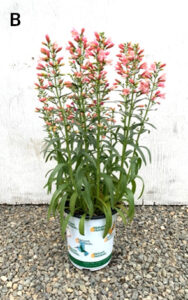
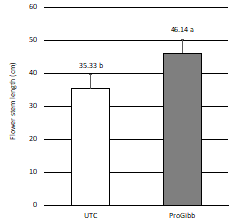
Fig. 5. Efficacy of ProGibb LV Plus T&O to increase flower stem length in penstemon ‘Pristine’. Treatments: Untreated control (A) and 100 ppm GA3 (B).
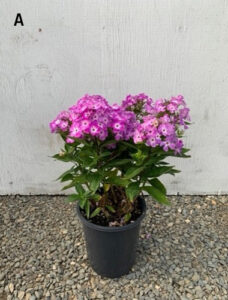
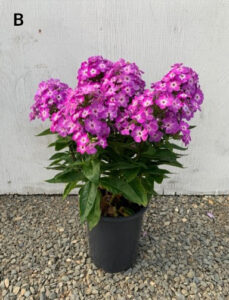
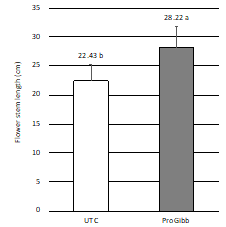
Fig. 6. Efficacy of ProGibb LV Plus T&O to increase flower stem length in phlox ‘Laura’. Treatments: Untreated control (A) and 100 ppm GA3 (B).
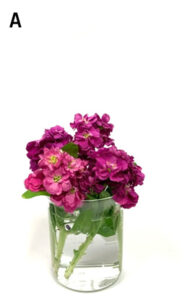
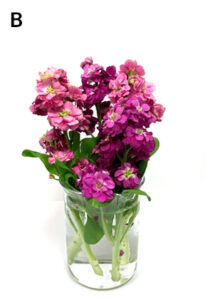
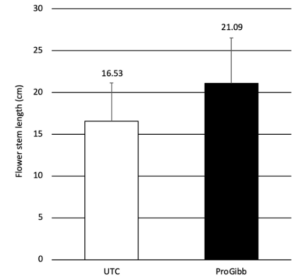
Fig. 7. Efficacy of ProGibb LV Plus T&O to increase flower stem length in column stock ‘Vintage Lavender’. Treatments: Untreated control (A) and 100 ppm GA3 (B).
Literature References
Al-Khassawneh, N. M., Karam, N. S., & Shibli, R. A. 2006. Growth and flowering of black iris (Iris nigricans Dinsm.) following treatment with plant growth regulators. Scientia Horticulturae 107(2): 187-193.
Annis, D.C., Starman, T.W., and Gibson, P.T. 1992. Photoperiod and gibberellic acid modify growth and flowering of Craspedia globosa. HortScience 27(10): 1082-1084.
Armitage, A.M., and Laushman, J.M. 2003. Specialty cut flowers. 2nd ed. Timber Press, Portland, OR, USA. 636 pp.
Bergmann, B.A., Dole, J.M., and McCall, I. 2016. Gibberellic acid shows promise for promoting flower stem length in four field-grown cut flowers. HortTechnology 26(3): 287-292.
Bergmann, B.A., Dole, J.M., Fisher, P., Njue, G., and McCall, I. 2017. Gibberellic acid promotes flower stem elongation in ‘Renaissance Red’ poinsettia. Can. J. Plant Sci. 97: 14-16.
Bose, T.K., Jana, B.K., and Mukhopadhyay, T.P. 1980. Effects of growth regulators on growth and flowering in Hippeastrum hybridum Hort. Sci. Hort. 12: 195-200.
Bridgen, M. 1992. Extend your production with late-season cut flowers. Grower Talks 56(1): 39-45.
Kumar, V., Kumar, V., Umrao, V., and Singh, M. 2012. Effect of GA3 and IAA on growth and flowering of carnation. HortFlora Research Spectrum 1(1): 69-72.
Louw, E.L., Jacobs, G., and Hoffman, E.W. 2018. Applications of plant growth regulators to single Leucospermum stems to extend stem length. Acta Hortic. 1201: 405-412.
Marth, P.C., Audia, W.V., Mitchell, J.W. 1956. Effects of gibberellic acid on growth and development of plants of various genera and species. Botanical Gazette 118(2): 106-111.
Michniewicz, M and Lang, A. 1962. Effect of nine different gibberellins on stem elongation and flower formation in cold-requiring and photoperiodic plants grown under non-inductive conditions. Planta 58: 549-563.
Ohno, H. and Kako, S. 1991. Roles of floral organs and phytohormones in flower stalk elongation of Cymbidium (Orchidaceae). J. Japan. Soc. Hort. Sci. 60(1): 159-165.
Othman, Y.A., Al-Ajlouni, M.G., A’saf, T.S., Sawalha, H.A., and Hani, M.B. 2021. Influence of gibberellic acid on the physiology and flower quality of gerbera and lily cut flowers. Int. J. Agric. Nat. Resources 48(1): 21-33.
Pogroweszka, E. and Sadkowska, P. 2006. The influence of gibberellic acid on the flowering of Astilbe x arendsii Arends cultivated for cut flowers in unheated plastic tunnel and in the field. Zeszyty Problemowe Postepow Nauk Rolniczycz. 510: 497-505.
Pudelska, K. and Podgajna, E. 2013. Decorative value of three dahlia cultivars (Dahlia x cultorum Thorsr. et Reis) treated with gibberellin. Modern Phytomorphology 4: 83-86.
Rudnicki, R.M., Nowak, J., Saniewski, M. 1976. The effect of gibberellic acid on sprouting and flowering of some tulip cultivars. Sci. Hortic. 4: 387-397.
Sharifuzzaman, S.M., Ara, K.A., Rahman, M.H., Kabir, K., and Talukdar, M.B. 2011. Effect of GA3, CCC and MH on vegetative growth, flower yield and quality of chrysanthemum. Int. J. Expt. Agric. 2(1): 17-20.
Tiwari, H., Kumar, M., and Naresh, R.K. 2018. Effect of nutrient management and gibberellic acid on growth, flowering and nutrients avaialability in post-harvested soil of Marigold (Tagetes erecta L.) cv. Pusa Narangi Gainda. Int. J. Chem. Studies 6(4): 510-514.
Verma, V.K. 2003. Response of foliar application of nitrogen and gibberellic acid on growth and flowering of carnation (Dianthus caryophyllus L.). Himachal J. Agric. Research 29(1-2): 59-64.
Zulfiqar, F., Younis, A., Abideen, Z., Francini, A., and Ferrante, A. 2019. Bioregulators can improve biomass production, photosynthetic efficiency, and ornamental quality of Gazania rigens L. Agronomy 9: 1-13.

